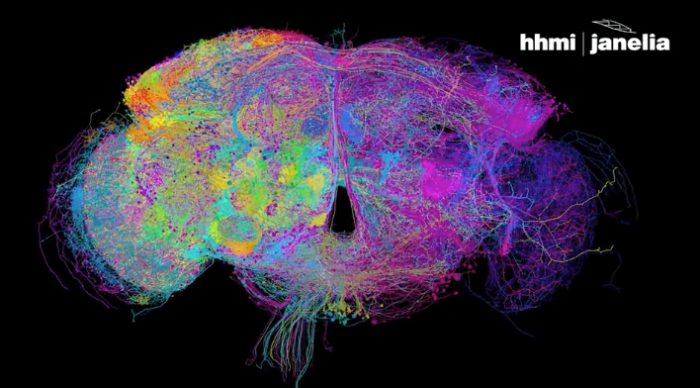If the electric signals that send information through our brain are the cars, then neurons are the roads on which they travel. We have billions of them! So as you might guess, mapping that all out is incredibly difficult, never mind time-consuming.
It's definitely a goal for neuroscientists. But one that's a ways off from being realized. However, researchers at the Howard Hughes Medical Institute in Maryland, U.S.A. did just get a step closer. An insect-sized step, to be precise.
Meet a fruit fly brain. Fully mapped.
The fruit of their labours
So, why a fruit fly brain? There's a very simple reason. At just (ha, just!) 100,000 neurons, this bug's tiny mind is about one million times simpler than that of a human. So way less stuff to map out.
Even then, it requires an incredible process, included (but not limited to): pumping metal particles into the fly brain so that electron particles would have something to bounce off of, which then was read by two high speed cameras. All in all, a "slice" of the bug brain could be analyzed in a few minutes. That's fast! Too bad they need over 7,000 of these slices (and around 21 million individual images) to create the full 3D model of the neurons!
It's easy to see why a similar model of our own mind is far from around the corner...
 Think flies are silly and simple? Well, this is how complex their brain is! (HHMI.org)
Think flies are silly and simple? Well, this is how complex their brain is! (HHMI.org)









